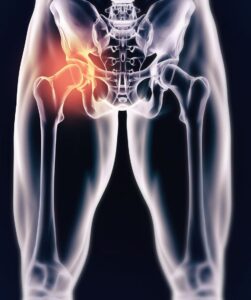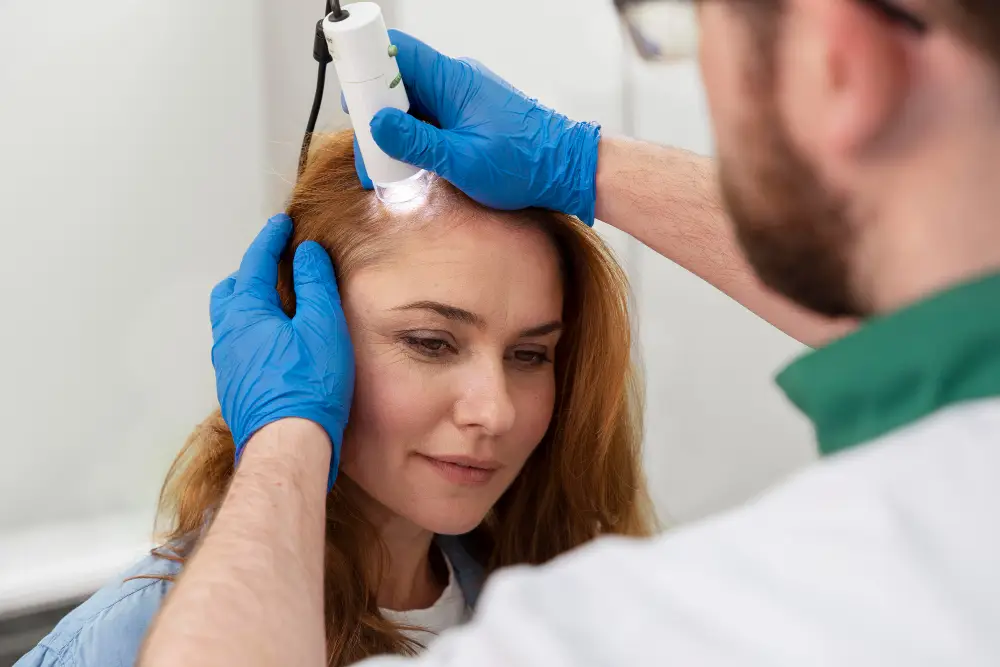
Understanding Hip Stem Cell Treatment: A Guide to Joint Preservation
Key Takeaways
- Hip stem cell treatment explores natural pathways for cartilage repair and joint preservation, offering an alternative perspective to traditional surgical interventions for conditions like osteoarthritis.
- Mesenchymal Stem Cells (MSCs) are at the forefront of this research, studied for their potential to support the body’s healing mechanisms within the hip joint.
- Choosing a provider requires thorough research into scientific grounding, regulatory adherence (e.g., INVIMA in Colombia), and a patient-centric approach that prioritizes education and support.
- Pereira, Colombia, offers an advantageous environment for advanced therapies, combining modern medical infrastructure with a tranquil setting conducive to recovery, and a focus on holistic patient care.
- A confidential case review is an essential first step to determine if regenerative medicine pathways are a potential consideration for your specific hip condition.
Table of Contents
- Introduction: Navigating Your Options for Hip Health
- The Stakes & Critical Implications of Hip Pain
- The Conventional Approach to Hip Conditions in Colombia
- The Pereira, Colombia Advantage: A Focus on Holistic Care
- Your Practical Resource: The Regencord Hip Clarity Compass
- Our Regenerative Philosophy & Approach
- Overcoming Common Hesitations: Why Seeking Clarity is a Strategic Advantage
- Glossary of Key Terms
- Frequently Asked Questions About Hip Stem Cell Treatment
- Taking the Next Step: Your Confidential Review
Introduction: Navigating Your Options for Hip Health
The journey through persistent hip pain, whether from osteoarthritis, cartilage wear, or other joint concerns, can be a complex and often isolating experience. For many, the search for lasting relief goes beyond conventional approaches, leading to an exploration of advanced therapies like hip stem cell treatment. At Regencord in Pereira, Colombia, we understand the profound impact hip conditions have on daily life and the desire for joint preservation.
This guide is designed as an educational resource, offering a transparent and ethically grounded perspective on hip stem cell treatment, its potential role in cartilage repair and joint preservation, and how it aligns with a holistic approach to patient well-being. We aim to provide clarity and empower you with knowledge, ensuring you have the information needed to make informed decisions about your health, without asserting unverified clinical superiority or guaranteeing outcomes.
The Stakes & Critical Implications of Hip Pain

Chronic hip pain is more than just a physical discomfort; it often limits mobility, impacts independence, and significantly diminishes quality of life. Conditions like osteoarthritis, a degenerative joint disease affecting millions worldwide, can lead to progressive cartilage breakdown, bone-on-bone friction, and debilitating pain. The U.S. National Institutes of Health (NIH) highlights osteoarthritis as a leading cause of disability, emphasizing the urgent need for effective management strategies that can preserve joint function and alleviate pain.
The implications extend beyond physical limitations. Sleep disturbances, reduced participation in social activities, and an increased reliance on pain medication are common. For many, the prospect of major surgery, such as total hip replacement, while effective for severe cases, brings its own set of concerns regarding recovery time, potential complications, and the permanence of the intervention. This landscape underscores the critical importance of exploring all available pathways for joint preservation and improved quality of life.
The Conventional Approach to Hip Conditions in Colombia

In Colombia, as in many parts of the world, the initial management of hip conditions like osteoarthritis and cartilage damage typically follows a stepped approach, guided by health authorities such as the Colombian Ministry of Health. This often begins with conservative methods, including rest, physical therapy to strengthen surrounding muscles, and pharmacological interventions such as non-steroidal anti-inflammatory drugs (NSAIDs) to manage pain and inflammation.
When conservative measures prove insufficient, intra-articular injections (e.g., corticosteroids or hyaluronic acid) might be considered to provide temporary relief. For advanced cases of osteoarthritis where the joint structure is severely compromised, surgical interventions, primarily total hip replacement, are often recommended. While these conventional treatments have well-established efficacy, they can also present limitations. NSAIDs may carry long-term risks, injections offer temporary benefits, and surgery involves significant recovery periods and inherent risks. Many patients seek options that may offer support for the body’s natural healing processes and focus on joint preservation before considering irreversible surgical procedures.
The Pereira, Colombia Advantage: A Focus on Holistic Care

For individuals seeking advanced regenerative pathways for hip conditions, Pereira, Colombia, presents a unique and compelling environment. The team at Regencord operates within a framework that combines modern medical infrastructure with a deeply patient-centric philosophy, distinguishing it as a destination for care.
Advanced Infrastructure & Medical Standards
Colombia has invested significantly in its healthcare system, with cities like Pereira becoming recognized hubs for medical innovation. Facilities here often feature state-of-the-art diagnostic equipment and treatment technologies, adhering to robust regulatory standards overseen by national entities like INVIMA (Colombia’s National Food and Drug Surveillance Institute) and the Colombian Ministry of Health. This oversight ensures that medical practices meet stringent quality and safety benchmarks, providing a credible foundation for advanced therapies.
A Guided Patient Journey
Navigating chronic hip pain, particularly osteoarthritis, often leaves patients feeling trapped between the limitations of conventional approaches and the unknowns of advanced therapies. Our experience shows that clear, step-by-step guidance, from initial information gathering to post-treatment support, is paramount. Patients aren’t just seeking a treatment; they’re seeking a restored sense of agency and a clear path through a complex medical landscape, often with significant emotional and physical burdens. This journey is as much about restoring hope and confidence as it is about physical regeneration.
The Regencord team is committed to facilitating a smooth, comprehensive patient journey. This includes thorough case reviews, personalized care planning, and dedicated support for every step of the process. We understand that effective care extends beyond the procedure itself, encompassing clear communication, compassionate assistance, and thoughtful follow-up.
An Environment Conducive to Recovery
Pereira, Colombia, offers a unique confluence of advanced medical infrastructure and a remarkably supportive environment for recuperation. Beyond the state-of-the-art facilities, the region’s focus on patient-centric care, combined with a lower cost of living and a naturally calming landscape, creates an ideal setting for healing. This is not merely a destination for treatment; it’s an ecosystem designed to reduce the stress of medical travel, allowing patients to truly focus on their recovery and well-being, supported by a system that prioritizes holistic support over purely transactional care.
The mild climate, rich cultural heritage, and the tranquility of the surrounding coffee region provide a peaceful backdrop that can enhance the recovery experience. This holistic approach considers not just the physical aspect of healing, but also the emotional and psychological well-being of the individual.
Value Without Compromise
The accessible cost of advanced medical care in Pereira, relative to many other developed nations, does not come at the expense of quality. Rather, it reflects different economic realities and operational efficiencies. Patients can access advanced, patient-centric care within world-class facilities, representing a compelling value proposition for those seeking high-quality options for joint preservation and pain relief.
Your Practical Resource: The Regencord Hip Clarity Compass

To help you navigate the complexities of hip health and potential regenerative pathways, we’ve developed “The Regencord Hip Clarity Compass.” This branded patient resource tool is designed to be your guide, providing a structured approach to understanding your condition, evaluating treatment options, and preparing for your journey. It’s a comprehensive checklist that encourages thoughtful consideration and informed decision-making.
The Hip Clarity Compass helps you:
- Understand Your Condition: A structured way to assess your symptoms, diagnosis, and what you hope to achieve.
- Evaluate Treatment Pathways: Questions to consider when comparing conventional and advanced regenerative options.
- Prepare for a Consultation: Key questions to ask your healthcare provider, ensuring all your concerns are addressed.
- Map Your Journey: A step-by-step overview of what to expect when exploring care with the Regencord team, from initial contact to follow-up.
This tool empowers you to be an active participant in your healthcare decisions, ensuring you feel confident and fully informed at every stage.
Our Regenerative Philosophy & Approach

At Regencord, our philosophy is rooted in education, patient empowerment, and the responsible application of scientific principles. We are dedicated to exploring pathways that support the body’s natural processes for healing and regeneration, particularly in the context of hip joint preservation.
Understanding Mesenchymal Stem Cells (MSCs)
Mesenchymal stem cells (MSCs) are a focus of extensive research in regenerative medicine. These cells, often sourced from the body’s own tissues (such as bone marrow or adipose tissue), possess certain properties that make them of interest for their potential to support tissue maintenance and repair. Studies highlighted by the NIH and published in PubMed-indexed journals explore MSCs for their anti-inflammatory, immunomodulatory, and trophic (nourishing) effects, which may contribute to a favorable environment for conditions like cartilage repair and joint preservation. ClinicalTrials.gov lists numerous ongoing investigations into MSCs for various orthopedic conditions, including hip osteoarthritis.
Our approach centers on understanding the current scientific landscape surrounding MSCs and their potential applications. We emphasize that while research continues to evolve, the goal of these regenerative pathways is to support the body’s own biological mechanisms, rather than introduce a “cure” or “miracle” solution. The focus remains on joint preservation and improving quality of life for suitable candidates.
Ethical Considerations & Transparency
We believe in absolute transparency regarding the current understanding and limitations of regenerative therapies. Our discussions are grounded in scientific literature from approved sources like the World Health Organization (WHO) and U.S. National Institutes of Health (NIH), ensuring that information provided is accurate and not misleading. We are committed to ethical practices and adhere to all relevant Colombian regulatory guidelines for advanced therapies, overseen by INVIMA and the Colombian Ministry of Health.
Our team works to demystify complex medical concepts, ensuring patients fully understand the potential benefits and realistic expectations of engaging with regenerative medicine pathways for hip health.
Overcoming Common Hesitations: Why Seeking Clarity is a Strategic Advantage
It is natural to have questions and concerns when considering advanced medical treatments, especially for a condition as impactful as hip pain. Our team frequently addresses several key hesitations:
“Is hip stem cell treatment truly legitimate or just experimental/unproven?”
The field of regenerative medicine, including the application of stem cells for orthopedic conditions, is an area of dynamic scientific exploration. It’s crucial to distinguish between unverified claims and research-backed approaches. Regulatory bodies like INVIMA in Colombia oversee the ethical application of advanced therapies. We focus on specific applications of mesenchymal stem cells (MSCs) where ongoing research and clinical trials, often listed on ClinicalTrials.gov and reviewed in PubMed, suggest their potential role in supporting cartilage health and joint preservation. We are transparent about what current science understands and what expectations should be realistic, grounding our discussions in verifiable data.
“I’m concerned about the safety and quality of medical care in Colombia for advanced treatments.”
Colombia has a robust and regulated healthcare system, with a strong focus on medical education and quality standards. Institutions like the Colombian Ministry of Health and INVIMA actively regulate medical practices, including advanced therapies, to ensure patient safety and quality of care. Pereira itself boasts modern medical facilities that meet high operational standards. Our team adheres to established protocols, and our facilities are designed to provide a secure and hygienic environment, aligning with best practices in patient care. This ensures that the care provided is not only advanced but also delivered with a steadfast commitment to safety and quality.
“The process seems overwhelming; how do I know if this is right for me, and what are the practical steps?”
We understand that the prospect of seeking advanced treatment can feel daunting. This is precisely why the Regencord team prioritizes a clear, guided patient journey. We begin with a confidential case review, where our team listens intently to your history and concerns. This is followed by a comprehensive diagnostic assessment to determine if regenerative pathways are a potential consideration for your specific condition. We then collaborate to develop a personalized care plan, explaining each step in detail. Our patient advocacy support is designed to simplify logistical complexities, transforming what might seem overwhelming into a manageable, well-supported pathway from your initial inquiry to post-treatment follow-up.
“What about the cost? Is it truly accessible without sacrificing quality?”
Concerns about treatment costs are entirely valid. While we cannot provide specific pricing in this educational guide, we can confirm that seeking advanced care in Pereira, Colombia, often presents a more accessible economic profile compared to similar treatments in other regions. This advantage stems from local economic factors, not from a compromise on the quality of care, facilities, or medical professionals. Our focus is on providing exceptional value: access to advanced, patient-centric care within world-class facilities. A confidential case review includes a transparent discussion of potential costs, allowing you to make a fully informed decision about your financial and health investment.
Glossary of Key Terms
- Osteoarthritis (OA)
- A degenerative joint disease characterized by the breakdown of joint cartilage and underlying bone. It is the most common form of arthritis.
- Cartilage Repair
- Medical strategies aimed at restoring or regenerating damaged articular cartilage within a joint, often a goal of regenerative therapies.
- Joint Preservation
- A treatment philosophy and set of procedures focused on maintaining the natural structure and function of a joint, with the aim of delaying or avoiding joint replacement surgery.
- Mesenchymal Stem Cells (MSCs)
- Adult stem cells found in various tissues (e.g., bone marrow, adipose tissue) that have been studied for their potential anti-inflammatory, immunomodulatory, and tissue-supporting properties, relevant to regenerative medicine.
- Regenerative Medicine
- A branch of medicine that develops methods to regrow, repair or replace damaged or diseased cells, organs or tissues.
- INVIMA
- Colombia’s National Food and Drug Surveillance Institute, responsible for the inspection, monitoring, and control of medicines, biological products, and medical devices.
Frequently Asked Questions About Hip Stem Cell Treatment
What exactly is hip stem cell treatment?
Hip stem cell treatment involves the responsible use of cells, most commonly mesenchymal stem cells (MSCs), to support the body’s natural healing processes within the hip joint. These cells are studied for their potential to help modulate inflammation and contribute to a more favorable environment for tissue maintenance, particularly for issues like cartilage wear and osteoarthritis. It’s an approach focused on joint preservation rather than traditional surgical reconstruction.
How long does recovery typically take after a regenerative hip procedure?
Recovery timelines can vary significantly based on the individual’s condition, the specific approach used, and how well their body responds. Generally, a period of reduced activity and gradual rehabilitation is recommended. Our team provides personalized post-procedure guidance and support, emphasizing a phased return to activity to optimize outcomes for joint preservation and overall well-being. This is a journey, not an instant solution.
Am I a candidate for this type of treatment?
Determining candidacy for regenerative medicine pathways requires a thorough evaluation of your specific hip condition, medical history, and overall health. Not everyone is a suitable candidate. The first step is a confidential case review with the Regencord team, which involves assessing your diagnostic imaging and medical records to understand if these pathways align with your needs and the current scientific understanding. This ensures a personalized and responsible recommendation.
What are the potential benefits and considerations for these regenerative approaches?
The potential benefits of regenerative approaches like hip stem cell treatment, as explored in various studies (e.g., PubMed-indexed journals), include supporting the body’s natural processes for joint preservation, potentially helping with discomfort, and improving mobility in suitable candidates. Considerations include the need for realistic expectations, the variable nature of individual responses, and adherence to post-procedure care protocols. Our team provides comprehensive information on these aspects, drawing from current scientific understanding and guidance from regulatory bodies like NIH and INVIMA.
How do I get started with Regencord?
Getting started is straightforward. We invite you to contact us for a confidential case review. This initial step allows our team to understand your unique situation, answer your preliminary questions, and guide you through the process of exploring regenerative medicine pathways available through the team at Regencord in Pereira, Colombia. We are here to provide clarity and support as you navigate your options for hip health.
Discover Your Path to Greater Hip Health
Are you exploring advanced options for hip pain, cartilage repair, or joint preservation? The journey to renewed mobility and comfort can begin with clarity and comprehensive support.
Discover if you are a candidate for the regenerative medicine pathways available through the team at Regencord in Pereira, Colombia. Contact us for a confidential case review.



